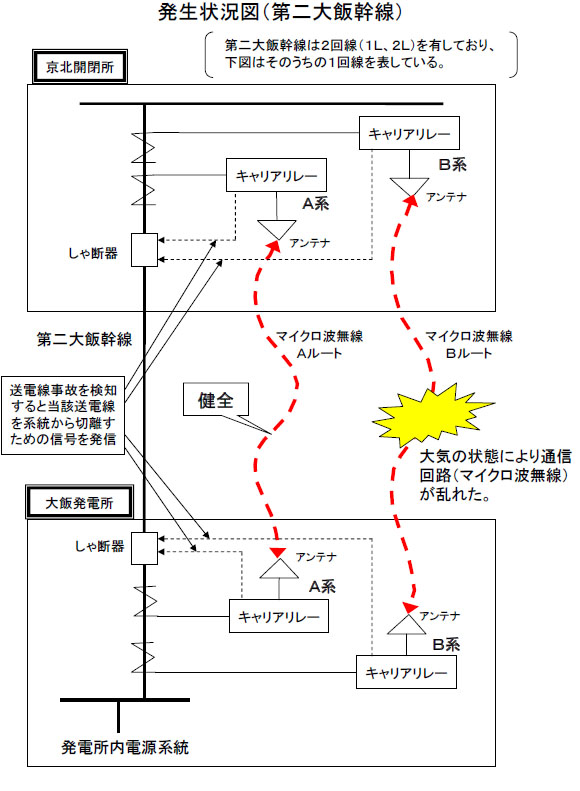(UPDATE) TEPCO managed to bypass the UPS and restarted the cooling system at 3:07PM on July 1. At the time of the restart, the temperature of the water inside the Spent Fuel Pool was 42.9 degrees Celsius. TEPCO plans to replace the faulty UPS this week. (From the tweets of another independent journalist who receives TEPCO email.)
=======================================
Independent journalists who cover TEPCO's press conference posted TEPCO's email updating them about the problem in the Reactor 4 SFP cooling system that automatically shut down on June 30, as follows (I got the text from Yasumi Iwakami's tweets):
【福島第一原子力発電所4号機使用済燃料プール代替冷却システムの自動停止に関する本日の調査結果】6月30日19時40分。「現場にて調査を行った結果、UPS(無停電電源装置)に問題があると推定されたことからUPSのバイパスなどを検討しており、復旧作業については明日、準備が整い次第、実施する予定。なお、午後6時現在のプール水温度は36.6℃(仮設温度計の指示値)で、使用済燃料プール水の温度が保安規定上の管理温度の上限である65℃に達するまで、約60時間と予測しております。
Today's investigation of the automatic shutdown of the Fukushima I Nuclear Power Plant Reactor 4 Spent Fuel Pool cooling system, as of 7:40PM on June 30, 2012:
We conducted the investigation at the site, and there seemed to be a problem with the UPS (Uninterruptible Power Supply). We are considering bypassing the UPS, and the work to restore the system will start tomorrow as soon as we are ready. The temperature of the pool as of 6PM [on June 30] was 36.6 degrees Celsius. We estimate that it will take about 60 hours for the water temperature of the Spent Fuel Pool to reach the upper limit of the safety regulations at 65 degrees Celsius.
That gives TEPCO until 6AM on July 3 to fix the problem. TEPCO already said they didn't find any leak.
Sankei Shinbun has additional details (6/30/2012; part):
東電が現場を調べたところ、主電源と冷却装置をつなぎ、非常時に電力を供給する無停電電源装置(UPS)が故障したとみられる。
TEPCO investigated the site, and said that the UPS (Uninterruptible Power Supply) may have broken. The UPS is connected to the main power supply and the cooling system, and provides electricity in an emergency.
冷却装置は貯蔵されている燃料を冷やすためプールの水を引き出して、冷却し再びプールに戻す仕組み。2系統あり、予備系統の装置を起動させて冷却を再開させようとしたが、2系統とも同じUPSを使用していたため再開できなかった。東電はUPSを迂回(うかい)させて冷却を再開する方針。
In order to cool the fuel stored in the Spent Fuel Pool, the cooling system draws water from the pool, cools the water and circulates it back into the pool. There are two lines, and TEPCO tried to resume the cooling operation by starting the backup line. However, since both lines use the same UPS, TEPCO couldn't restart the system. TEPCO is planning to bypass the UPS and restart the system.
There are rumors (like the one from Professor Takeda) that the Reactor 4 SFP is mechanically damaged because of shoddy construction. I have no idea what the basis is for Professor Takeda's assertion that shoddy construction work damaged the pipe of the cooling system. They seem as baseless as the rumors that everything is dandy or that the building is listing like the Tower of Pisa.
The worker who tweets from Fukushima I Nuke Plant tweeted this about the problem:
こんにちは(^O^)さっきオイラにフォロワーさんから「いま4号機の噂が…」ってDM来てビックリしたんだけど、オイラ達機械屋さんに呼び出しはかかってないでし。どうやら制御系トラブルみたいでし。修理は部品手配もあるし明日以降かなぁ…。とりあえず温度上昇傾向から見て考えても大丈夫でし。
Hello. I was surprised by DM [twitter's direct message] from one of my followers saying "Right now, the rumor of Reactor 4..." At least mechanical engineers like me haven't been called in. It looks like a problem with the control system. Repair will probably be tomorrow, as they need to arrange for the repair parts. For the time being, looking at the temperature trend, I don't think there is anything to worry.
ホントにヤバい状況ならオイラ達には必ず緊急呼び出しかかるでし。あと待機してるキリンが出動するでし。その時はオイラが必ず速攻つぶやくでしから。オイラはプリン食べて普通に休み満喫中でし。でわでわ。
If it is really a serious situation, we would receive an emergency call. Then the crane will be used [Putzmeister concrete crane that pours water directly into the Spent Fuel Pool]. If that should happen, I will tweet right away. But I'm enjoying my day off, eating sweets. See ya.

















 Tokyo Time
Tokyo Time
![[Most Recent Quotes from www.kitco.com]](http://www.kitconet.com/charts/metals/gold/t24_au_en_usoz_2.gif)

